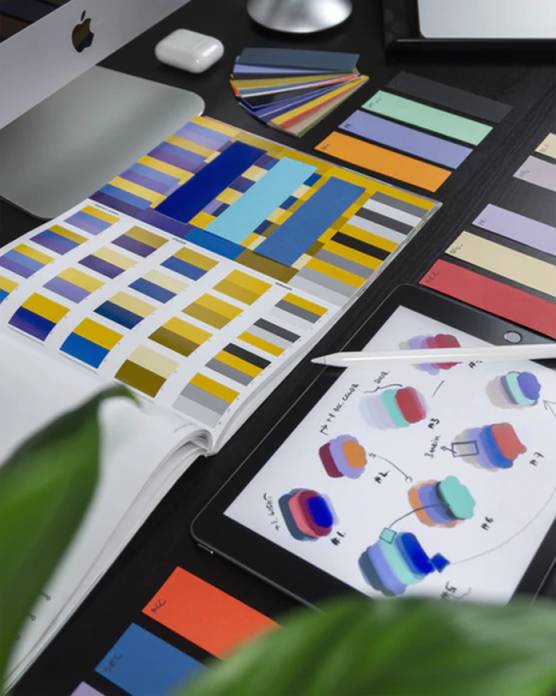It is no wonder that the design industry has taken a huge step forward within the past decade. Along with technological development, experts have improved the field furnishing it with new ideas, technologies, and tasks. As a result, working with various design projects is way more manageable now than it was dozens of years ago.
These days, numerous opportunities are open for you when you need to come up with something appealing and unique. Weighing up the pros and cons of different methods, you can decide to work on your own, practicing self-drawing, using a constructor to automate some tasks, or opt for ready-made solutions. Given the number of available options, the question of what to prefer and how different those methods are may arise.
Self-drawing design speaks for itself; choosing it, you entirely rely on your skills and expertise in the field. The second equips you with additional ammunition, letting you complete some tasks without your intrusion. The last, however, allows you to do nothing and get a ready-made solution instead. In plain English, while the first involves your total capacity, meaning you have to find ways to, for instance, remove background from image, the second and third methods already include such an option. But the differences between self-drawing design, a constructor, and readily-available solutions go way beyond that. Please continue to read to learn more about these three concepts and their dissimilarities.

What is self-drawing design?
Self-drawing design is the product of your inventiveness and efforts. You decide what your final item will look like and how you will create it. Whether you need to design a website, logo, banner, or poster, a self-drawing approach means you do it independently. Professionals claim this strategy to be the most demanding and time-consuming, and that’s not for no reason.
The thing is, even though you can apply tools like Figma, Adobe, Sketch, or JavaScript–after all, you must use such instruments to be able to design a page or any other visual–all the work requires your full attention and effort. It is not just that you can delegate some assignments to other people or services. The entire job is in your hands, and you should devote yourself to it wholly to finish it successfully.

What is a constructor?
A constructor allows for some flexibility in design. In other words, you can cover a particular task by using a constructor. Also known as additional tools or software, it helps you save time and complete things you either don’t want to or can’t finish. For example, as pointed out earlier, the constructor can help you get rid of the image’s background and replace it with your visual. Could you complete this undertaking yourself? Of course, you could. However, doing that with no outside help may be cumbersome, and sometimes, it’s better to use such a constructor than attempt to handle it singly.
The great thing about constructors is that the web offers a good deal of free tools that you can use at your discretion. As mentioned above, they can remove background, generate attention-grabbing color palettes most suitable for your project, and provide you with dozens if not hundreds of templates pertinent to your brand if you have one.

What are ready-made items?
Ready-made solutions follow the pick-and-forget strategy. The most straightforward example is the McDonald’s takeaway option. All you need is to drive in and place an order. You can modify your positions and build your own meal. Once you do that, you pay for the order, take your customized meal, and vacate the premises.
By the same token, ready-made design solutions meet your expectations, preferences, and interests. If–to illustrate–you want your business card to have an exclusive color palette, a company that renders design services will create a one-of-a-kind color, be it related to white, green, yellow, or red hex codes. Besides, this option offers readily-made things, literally. They have been pre-made and placed on the web so that people can quickly choose them and focus on other tasks.
Key Takeaways
In conclusion, it would be reasonable to wrap things up and explain once again the main difference between self-drawing design, constructor, and off-the-shelf solutions. Self-drawing design relies on one’s resources and prowess; you rest upon your expertise in the field and put the fruits of your imagination on paper. Importantly, this option enables you to use designing tools.
A constructor, however, helps you deal with subtasks while you work with more crucial matters. It can work with anything from removing background from an image to more proficient tasks. Finally, off-the-peg solutions are tantamount to meals in a restaurant. You place an order and include your wishes, and the chef tailors the order to your requirements.
Finally, other than being different in time and effort, they are also contrasting in financial terms. That is, while the first requires little to no wherewithal (so does the second option, sometimes), the third choice is predominantly paid. Moreover, the higher your requirements regarding the end product, the higher the sum you will need to pay in the long run.






